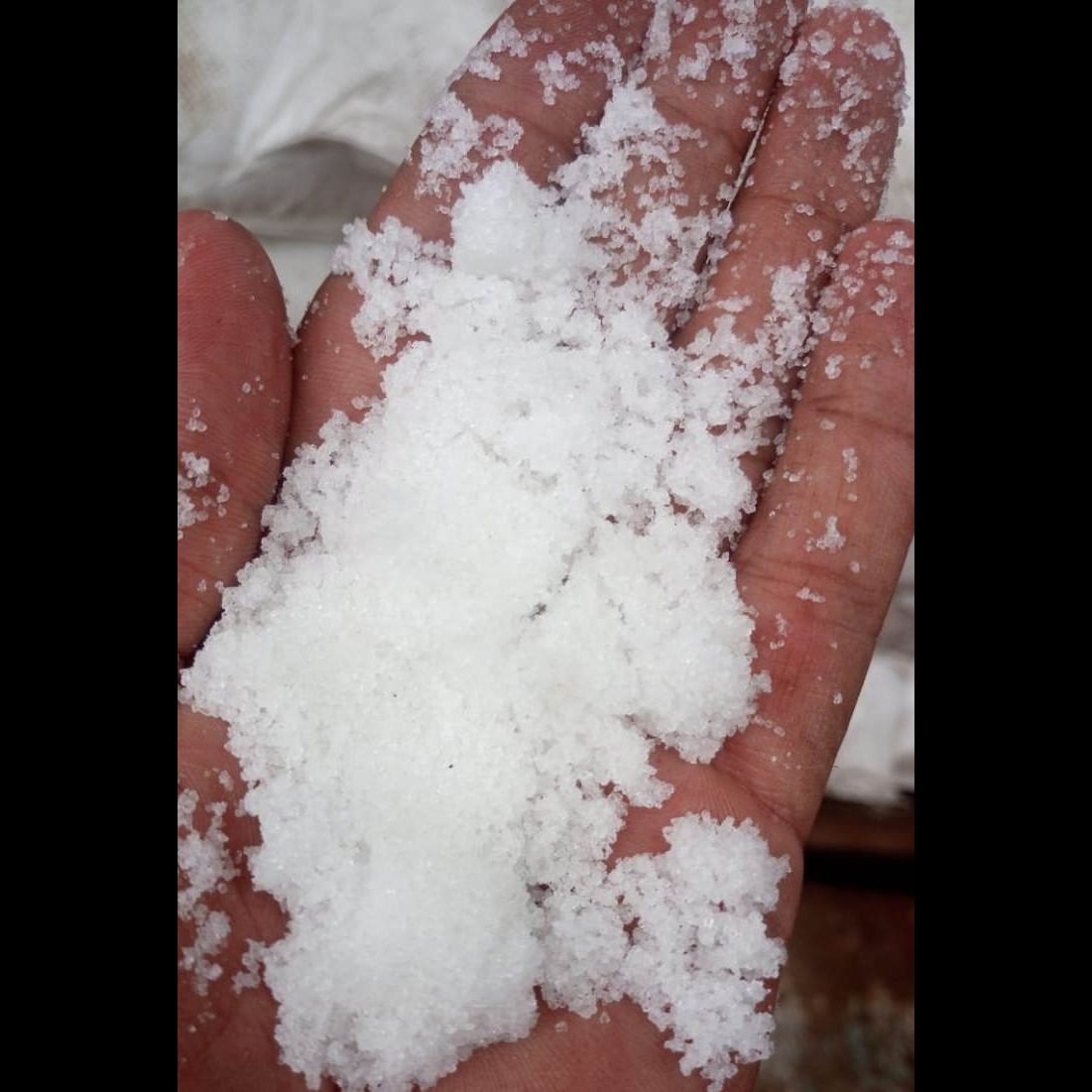
DISCHARGING PROCESS USES OF SODIUM NITRATE (NaNO₃)
Manufactured by Laxmi Enterprise, Vadodara, Gujarat
⚙️ 1. Overview
Sodium Nitrate (NaNO₃) is an inorganic salt known for its:
High melting point (~306°C)
Excellent thermal stability
Good heat transfer and storage capacity
Because of these properties, it is widely used in high-temperature thermal energy storage systems — particularly in solar thermal power plants, molten salt heat exchangers, and industrial heat recovery units.
During the discharging process, stored heat energy from molten sodium nitrate is released to generate useful heat or steam for power, industrial heating, or other applications.
🌡️ 2. How the Discharging Process Works
In a molten salt thermal storage system, Sodium Nitrate is used either alone or mixed with Sodium Nitrite (NaNO₂) (commonly in 60:40 ratio, known as Solar Salt).
🔁 Phase 1: Charging (Heat Storage)
At high temperature (usually 290°C to 565°C), sodium nitrate absorbs heat energy and remains in molten (liquid) state.
Heat is stored as sensible heat — not through phase change but through temperature rise.
🔁 Phase 2: Discharging (Heat Release)
When heat is required:
The molten sodium nitrate transfers stored heat to a working fluid (usually water, thermal oil, or air).
The heat transfer occurs through heat exchangers or steam generators.
As the salt cools down, it releases its stored energy but remains in liquid state until ~300°C, ensuring steady and efficient heat output.
This released heat is then used to:
Generate steam for turbines (in CSP plants)
Provide process heat for industrial operations
Support continuous operations during non-sunlight hours in solar systems
🔬 3. Technical Reaction and Heat Flow
Although sodium nitrate does not undergo a chemical reaction during discharging, its thermal energy release can be expressed.
Thus, a large quantity of molten sodium nitrate can release significant heat energy as it cools from 565°C down to ~290°C.
🏭 4. Industrial Applications of Discharging Process
Sector / System Use of Sodium Nitrate During Discharge
Solar Thermal Power Plants (CSP) Heat stored in daytime is released at night to produce steam and electricity continuously.
Molten Salt Heat Exchangers Acts as a heat reservoir that transfers energy to process fluids when primary heat source is off.
Metal Treatment / Annealing Units Provides steady high-temperature heat during controlled cooling cycles.
Glass, Ceramics, and Chemical Processing Releases stored heat to maintain uniform process temperature during intermittent operations.
Waste Heat Recovery Systems Reuses stored energy from flue gases or furnaces for secondary heating needs.
⚙️ 5. Features of Laxmi Enterprise Sodium Nitrate in Discharge Systems
Property Advantage in Discharging Use
High purity (≥99%) Ensures consistent heat release without decomposition or residue formation
Thermally stable up to 600°C Ideal for repeated heating/cooling cycles in CSP and industrial units
Excellent heat transfer capacity Provides smooth and efficient discharging without hot spots
Non-corrosive (with compatible alloys) Safe for use in stainless steel or nickel alloy exchangers
Locally produced in Vadodara Reduces cost and logistics time for Western Indian industries
🔋 6. Energy Example:
For 1, 000 kg of Sodium Nitrate cooling from 565°C to 300°C:
That equals roughly 118 kWh of usable thermal energy — enough to run an industrial boiler or solar turbine for several minutes at full load.
🌞 7. Real-World Use Case
In a Concentrated Solar Power (CSP) Plant:
Daytime: Solar collectors heat Sodium Nitrate to ~565°C (charging phase).
Nighttime: The hot molten salt transfers stored heat to water in a steam generator.
Result: Continuous steam generation and electricity production even when sunlight is absent.
Laxmi Enterprise Sodium Nitrate is ideal for such systems because of:
Uniform particle distribution
High thermal conductivity
Proven cycle stability
♻️ 8. Environmental and Economic Benefits
100% reusable over hundreds of charge–discharge cycles
Zero carbon emission thermal storage medium
Reduces fuel cost by utilizing stored solar or waste heat
Eco-safe and recyclable inorganic compound
🏢 9. Target Users of Laxmi Enterprise Sodium Nitrate
Solar Thermal Power Plants (CSP, Parabolic Trough, Tower Systems)
Industrial Furnaces and Heat Recovery Units
Metal Processing and Annealing Plants
Chemical Process Industries needing consistent heat supply
Research Institutes and Engineering Colleges for PCM and TES studies
🧾 10. Summary: Discharging Value of Laxmi Enterprise Sodium Nitrate
Parameter Details
Chemical formula NaNO₃
Melting point 306°C
Operating temperature range 290°C – 565°C
Type of heat storage Sensible heat
Energy density ~118 kWh per ton (for 265°C range)
Cycle life 500–1, 000+ thermal cycles
Primary discharge use Controlled heat release for power, steam, or industrial heating
Sodium Nitrate Manufacturers
Sodium Nitrate Wholesale
Industrial Grade Sodium Nitrate
Food Grade Sodium Nitrate
High Purity Sodium Nitrate
Sodium Nitrate Fertilizer
Nitrogen Fertilizer Supplier
Nitrate-Based Fertilizers
Crop Nutrition Solutions
Agricultural Chemicals Supplier
Sodium Nitrate Food Additive
Curing Salt Additive
Sodium Nitrate used as heating Catalyst by Laxmi Enterprise, Vadodara, Gujarat, India.

